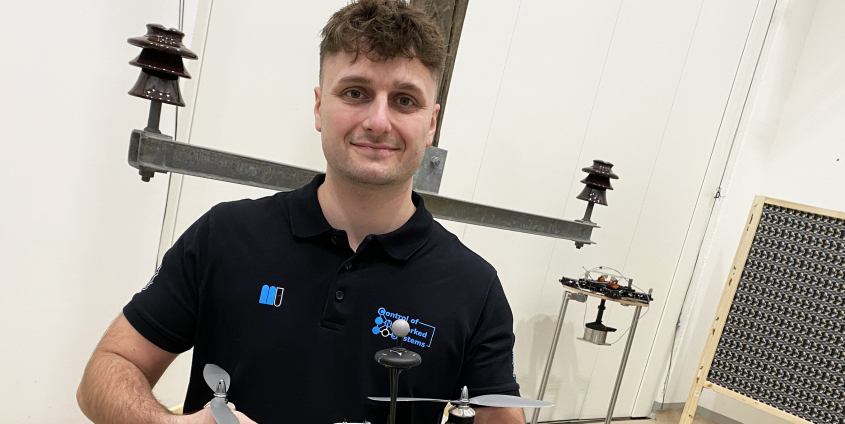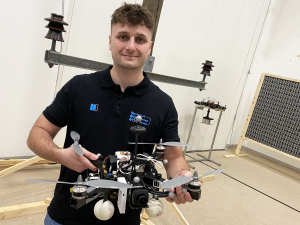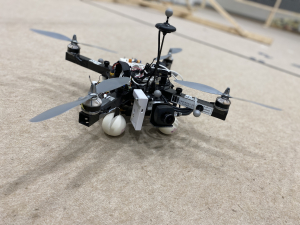Drones inspect electricity pylons: Navigation technology under development at the University of Klagenfurt
Power lines are frequently damaged during snowfall or snowstorms. Until now, engineers working for the energy providers have had to painstakingly inspect power pylons and insulators on site to check for damage. In the future, drones will be able to perform this task. Researchers at the University of Klagenfurt are developing new technologies to support autonomous inspections.
“The drone is intended to automatically fly up electricity pylons by following the cables and identify any damage. That’s the dream and we’re getting closer to realising it in small steps,” says Thomas Jantos, who works as a doctoral student in the Control of Networked Systems (CNS) research group at the University of Klagenfurt. Significant progress has been made in the MUKISANO project, funded by the Austrian Research Promotion Agency (FFG).
Thomas Jantos explains: “The drone will be controlled autonomously using artificial intelligence. It must therefore be able to recognise an electricity pylon and an insulator on the pylon.” The positioning and navigation of the drone is an important part of this: it has to fly around the insulator at a distance of three metres and take pictures. Precise localisation is essential to ensure that the camera recordings are comparable. “We are looking to achieve centimetre precision,” Thomas Jantos emphasises. The research team is conducting the corresponding tests in the drone hall on an electricity pylon provided by KNG (Kärnten Netz GmbH).
The drone can already recognise the exact type of pylon. The insulators have also been identified as such by the artificial intelligence. However, what is particularly important for the basic research is that this information can also be used to determine the position of the drone relative to the mast. The challenge lies in transferring the intelligence to the small helicopters. “The computers on the drone are still too slow compared to the computers used to train the AI. We are working on ways to optimise this further,” Thomas Jantos adds.
Photos can be used free of charge for media coverage of the project (Credit: aau/Müller)










 aau/Müller
aau/Müller


